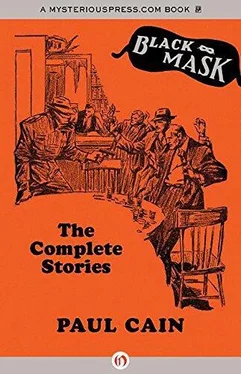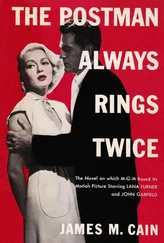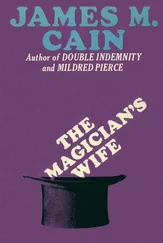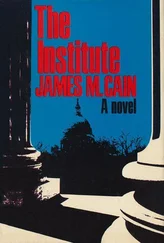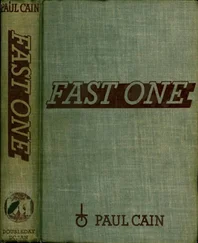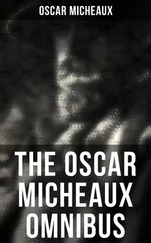According to his memoir, Raconte pas ta vie (1972), Duhamel had the dubious honor of meeting Sims in France around that time. The man he encountered was a physically decrepit, unbearably needy specimen, who was “unable to take a single step by himself” — a limp “octopus,” a “vampire” that would exceed Polanski’s imagination. [21] Marcel Duhamel, Raconte pas ta vie (Paris: Mercure de France, 1972), 549-50. This episode is also discussed in Peter Gunn, “Paul Cain, 1902–1966,” in Dictionary of Literary Biography, Volume 306: American Mystery and Detective Writers , ed. George Parker Anderson (Detroit, MI: Gale, 2005), 42.
Duhamel’s story confirms the notion that Sims had bottomed out, and was now betting on Paul Cain:
It was Hollywood that had done him in. A renowned screenwriter, a darling at “parties,” disgusted with work that was unworthy of him, he ended up seeking inspiration in alcohol. This was followed by emotional setbacks, two divorces, three detoxification cures, and a course of psychoanalysis; he came to Europe looking for some kind of salvation, after having tried everything else. “And,” he said, “you are my last hope.” [22] Ibid., 549.
Duhamel couldn’t stand him. Using the advance for a French translation of Seven Slayers , the editor sent Sims packing for Spain. Life in Alicante and on Mallorca seems to have worked miracles for Sims’s health; it’s hard to believe that his whimsical article on Spanish cooking for Gourmet magazine, “Viva la Castañetas: A Spanish [Mostly Mallorquin] Letter” (June 1951), could have been written by the same “jellyfish” that Duhamel had seen off at the train station. Upon receiving word of Sims’s newfound joie de vivre , and another marriage, it took Duhamel “some time to recover from the shock.” [23] Ibid., 550.
Peggy Gregson had recently graduated from the University of North Carolina and was taking a grand tour of Europe with her girlfriend, Jeanne Summers. She, Jeanne, and Jeanne’s mother met the man they knew as Peter Ruric at a Mallorcan restaurant in 1955. It was Jeanne’s mother, roughly Sims’s contemporary, who struck up the conversation, but Sims had his eye on Peggy. Although he was thirty years her senior, and a year older than her own father, the bohemian writer swept the girl off her feet. She briefly returned to her family home in Varina, Virginia, but she didn’t stay away long, soon heading back to Spain.
Peggy would become Cain’s third wife. In Catholic Spain, three was two too many. The couple tied the knot in Tripoli, Libya, where they spent a month in 1956 in order to established residence.
They eventually set sail for California on a freighter from Italy, travelling through the Panama Canal and points south for “forty days and forty nights,” as Peggy recalls. They settled in South Laguna and had two sons: Peter Craig in 1956 and Michael Sean in 1958. According to Peggy, Sims, now in his fifties, wasn’t hitting the bottle any more than was usual for the period. She describes a happy and charmed life, although she admits his old Hollywood friends may have wondered what he was doing “with that little girl.” He was a kind, loving man — a snazzy dresser and a wonderful cook — but simply couldn’t provide for his family. He refused to abandon his identity as a writer, even when the writing opportunities had dried up for good. Peggy sensed that his old friends weren’t as eager to see him as he was to see them. He didn’t seem to be writing much anyhow. But pumping gas wasn’t an option, nor was letting Peggy work.
When Peter Craig was ten months old, the family travelled cross-country in Sims’s Thunderbird, paying a visit to the Gregsons in Virginia. The dashing author wowed Peggy’s friends, but unnerved her parents. In December 1958, a few months after Michael Sean’s birth, the family went east again. Sims first connected with his friend Jim Lowry in Washington, D.C., and then took off for Cuba. Peggy and the kids settled with her parents in Virginia.
Sims had tried to consolidate his personae as early as the mid-’40s, when he’d composed a bio for Shaw’s Omnibus that began, “Paul Cain is Peter Ruric, wrote his first crime novel in the early thirties on a bet.” Shaw did not to use it (although a smaller “Peter Ruric” did appear in parentheses below “Paul Cain”). Sims had also swapped “Peter Ruric” for “Paul Cain” on the tear sheets of the stories in Seven Slayers , which now sit in the Joseph Shaw papers at UCLA’s Young Research Library. The publishers kept “Paul Cain.”
On top of all his other woes — both mental and material — this diffusion of identity must have been exhausting. Nowhere is that exhaustion more evident than in the letters and postcards that Sims sent Peggy and his sons in the late ’50s and early ’60s, care of her family and friends in Virginia. He was no longer able to control or keep up the appearances that were so important to him. Bowman secured some of these letters from Peggy in the 1980s, and copies now sit in the E. R. Hagemann papers at UCLA’s Young Research Library.
Reading them can be a painful experience. One of the longer letters is a New Year’s greeting, written aboard a German liner in Havana on the evening of December 31, 1958, and the morning of January 1, 1959 — on the eve of Batista’s flight. Sims writes of his failing health, an unsuccessful attempt to place a novel called Truce , faint hope for a play called The Ecstasy Department , and his generally dwindling prospects:
“Truce” is out for the moment, honey — Doubleday is edgy about it being “uncompromisingly sexual” — they didn’t say sexy, they said sexual— and they’ll have to see more of it and for this time of unpeace it isn’t the answer. Maybe The Ecstasy Department is, but it’s in a trunk in Laguna. It probably isn’t the answer either — there are so few answers left for a man with thought shaped like mine who is fighting for so much more than his life. I thought of a cheap hotel in some small town by the sea in Florida. Is there one? So. After, conceivably, getting physically well in the sun, what would I do? I thought of S. America. I thought of Africa. (I whisper this, ever so gently — a man in even consummately concealedsorrow is not made welcome in new places. They know. He’s not made welcome in old places either. I may learn to ever more consummately conceal it during this, God grant, short empty interval, but I shall never be really welcome again anywhere until I am whole again. Stop. Unwhisper.)
In the end, his consummate disguises worn thin, Sims returned to Los Angeles: “And so, whether I like it or not, California seems to be in the cards, so I’m trying to like it. It takes a certain kind of courage to go back there looking like a tramp and face the music and the bill-collectors and our friends.”
Cracking Hollywood again proved nearly impossible. His last credit is for a contribution to the script of “The Man from Blackhawk,” an episode of the TV Western The Lady in Yellow , which aired on January 24, 1960. His letters — one sent from Mrs. Tita D’Oporto’s Studio House apartment at 6201 Fountain Avenue, several cuts below the Montecito — tell of strained circumstances. He claims that three stories he had written for a television series were abruptly shelved. Above all, he longs to reunite with his family, pleading for a response, composing nursery rhymes for his children, and crowding the letters’ margins with doodles of concentric hearts and polka-dotted elephants:
If you said, ‘They’re paying high wages in the brinzel factory at Dimpling Ky. and need men — we’ll meet you there — you can work on books and stories nightstand Sundays,’ I’d be there so fast it would make all our Ruric heads spin.
Читать дальше
